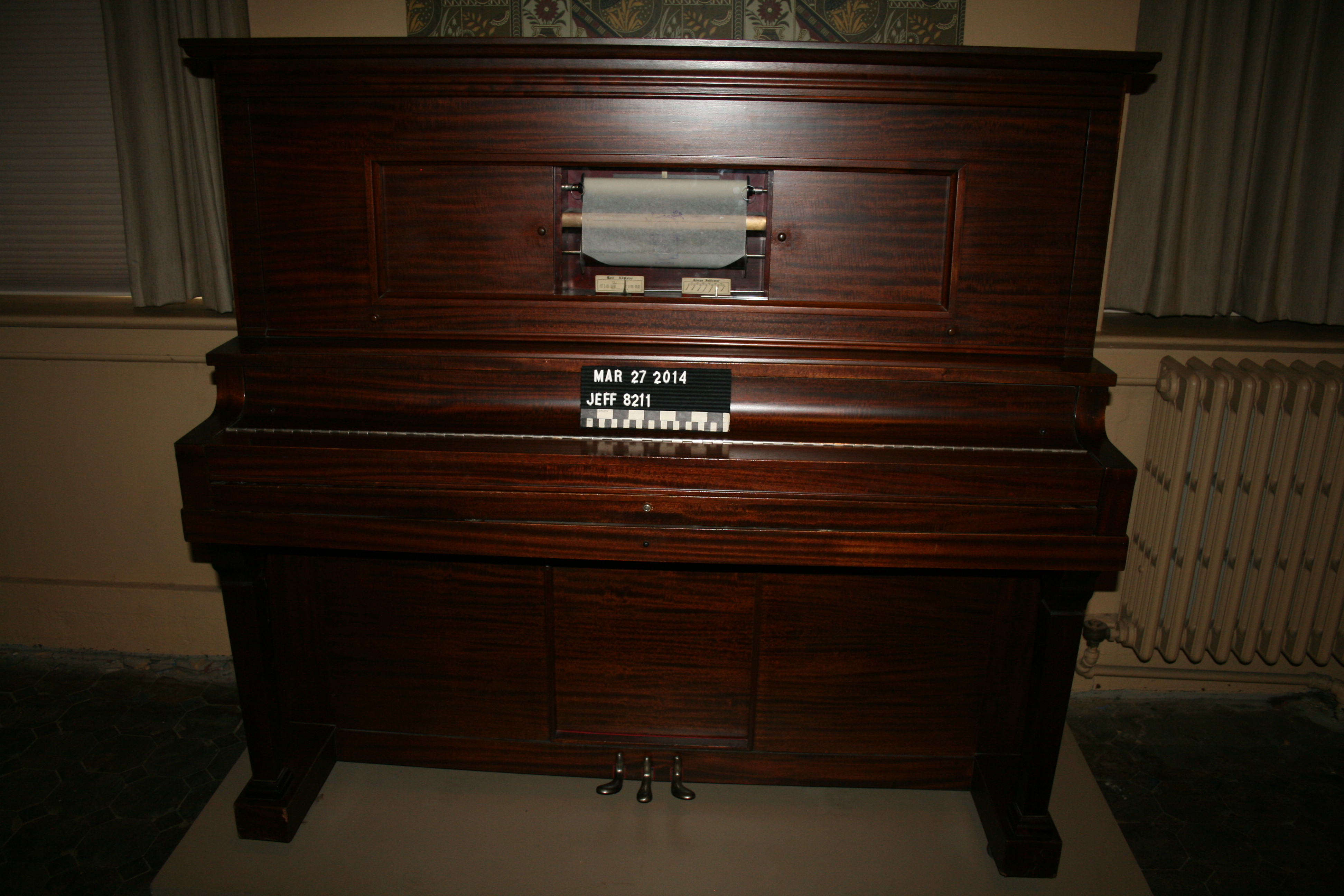JEFF 8211-Mahogany Player Piano, c 1903/1905
The rise of the player piano grew with the rise of mass-produced pianos for the home in the late nineteenth and early twentieth centuries. A beautiful piece from the JNEM collections is JEFF 8211, a mahogany player piano, c 1903/1905 (with roller) made by the Palmer Piano Company. The Palmer Piano Company was based in New York and produced player pianos from approximately 1895 through 1910. Despite the fact that Aeolian and American Piano Companies were the largest producers of player pianos, many smaller companies like the Palmer Piano Company existed and made player pianos as fast as they could. This particular piano contains a Roll Adjuster below the roll and also a Tempo Indicator that has 6 different settings. A piano like this one was considered an important part of a middle class household.
Player piano technology had been developing for quite some time, starting in the 1840’s, but it wasn’t until 1898 that the Aeolian Company put a pneumatic piano player on the market. Designed by Edwin S.Voley, the “Pianola” was wheeled up beside a piano where it actually played the keys. These players were cumbersome and awkward and Aeolian soon realized that there was more money to be made if the player could be placed inside the piano. By 1903, player pianos with interior player mechanisms were on the market. By 1910, the original “Pianola” was obsolete. Aeolian captured most of the market although hundreds of brands were sold. With the interchangeable perforated rolls, the general public could bring a variety of music into their homes.
Player pianos were viewed as a sign of gentility and prosperity and also seen as a family treasure, helping to keep the entire family together and entertaining both young and old. The player piano was at the height of popularity during the late 1910s and early 1920s. Along with classical works, ragtime and marches, other music, such as jazz, made its way into the American home. Many composers happily sold their music rights to piano roll companies so that their music could reach bigger audiences.
By the mid to late 1920’s, excitement over the phonograph and radio eclipsed the popularity of player pianos. Player piano manufacturing declined sharply. Even player piano giants like Aeolian and American Piano Company were in financial trouble. The stock market crash of 1929 dealt the final blow to the industry. Some of the old players remain today and remind us what wonderful music and joy they brought to all.

